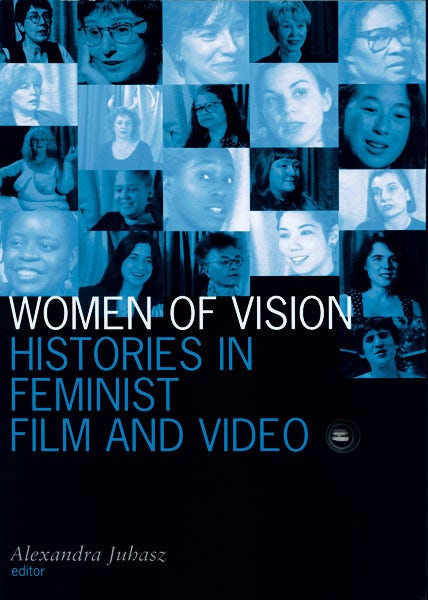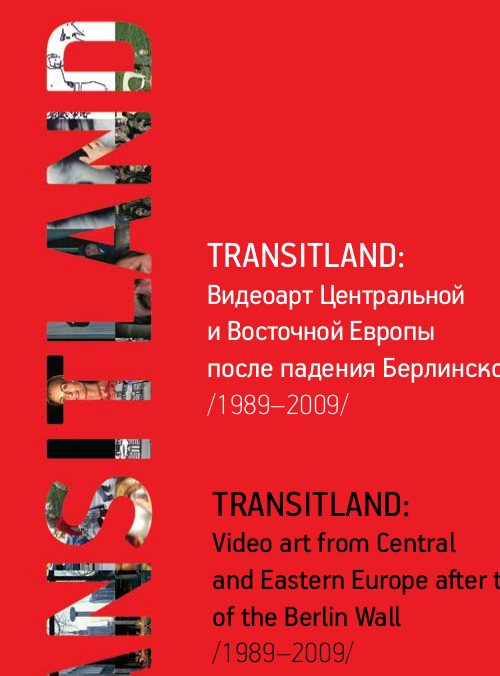Edward S. Small: Direct Theory: Experimental Film/Video as Major Genre (1994)
Filed under book | Tags: · aesthetics, avant-garde, cinema, computer film, expanded cinema, experimental film, film, film theory, phenomenology, structural film, video, video art

“Undulating water patterns; designs etched directly into exposed film; computer- generated, pulsating, multihued light tapestries—the visual images that often constitute experimental film and video provide the basis for Edward S. Small’s argument for a new theory defining this often overlooked and misunderstood genre. In a radical revision of film theory incorporating a semiotic system, Small contends that experimental film/video constitutes a mode of theory that bypasses written or spoken words to directly connect Ferdinand de Saussure’s “signifier” and “signified,” the image and the viewer. This new theory leads Small to develop a case for the establishment of experimental film/video as a major genre.
Small contends that the aesthetic of experimental film/video would best be understood as a coordinate major genre separate from genres such as fictive narrative and documentary. He employs eight experimental technical/structural characteristics to demonstrate this thesis: the autonomy of the artist or a-collaborative construction; economic independence; brevity; an affinity for animation and special effects that embraces video technology and computer graphics; use of the phenomenology of mental imagery, including dreams, reveries, and hallucinations; an avoidance of verbal language as either dialogue or narration; an exploration of nonnarrative structure; and a pronounced reflexivity—drawing the audience’s attention to the art of the film through images rather than through the mediation of words.
Along with a theoretical approach, Small provides an overview of the historical development of experimental film as a genre. He covers seven decades beginning in France and Germany in the 1920s with European avant-garde and underground films and ends with a discussion of experimental videos of the 1990s. He highlights certain films and provides a sampling of frames from them to demonstrate the heightened reflexivity when images rather than words are the transmitters: for example, Ralph Steiner’s 1929 H2O, a twelve-minute, wordless, realistic study of water patterns, and Bruce Conner’s 1958 A Movie, which unites his themes of war-weapons-death and sexuality not by narrative digesis but by intellectual montage juxtapositions. Small also examines experimental video productions such as Stephen Beck’s 1977 Video Weavings, which has a simple musical score and abstract images recalling American Indian rugs and tapestries.
Small adds classic and contemporary film theory discussions to this historical survey to further develop his direct-theory argument and his presentation of experimental film/video as a separate major genre. He stresses that the function of experimental film/video is “neither to entertain nor persuade but rather to examine the quite omnipresent yet little understood pictos [semiotic symbols] that mark and measure our postmodern milieu.”
Publisher SIU Press, 1994
ISBN 0809319209, 9780809319206
122 pages
EPUB (updated on 2012-7-9)
Comments (2)Alexandra Juhasz (ed.): Women of Vision: Histories in Feminist Film and Video (2001)
Filed under book | Tags: · cinema, feminism, film, film history, film theory, gender, video, video art, women

“Legends and rising stars of feminist film and video tell their stories.
Alexandra Juhasz asked twenty-one women to tell their stories-women whose names make up a who is (and who will be) who of independent and experimental film and video. What emerged in the resulting conversations is a compelling (and previously underdocumented) history of feminism and feminist film and video, from its origins in the fifties and sixties to its apex in the seventies, to today.
Women of Vision is a companion piece to Juhasz’s 1998 documentary of the same name. The book presents the complete interviews, allowing readers to hear directly the voices of these articulate, passionate women in an interactive remembering of feminist media history. Juhasz’s introduction provides a historical, theoretical, and aesthetic context for the interviews.
These subjects have all shaped late twentieth-century film and video in fundamental ways, either as artists, producers, distributors, critics, or scholars, and they all believe that media are the most powerful tools for effecting change. Yet they are a very diverse group, with widely varying personal and professional backgrounds. By presenting their interviews together, Juhasz shows the differences among those involved in feminist media, but also the connections among them, and the way in which the field has been enriched by their sharing of knowledge and power. In the end, Juhasz not only records these women’s careers, she broadens our understanding of feminism and shows how feminist history and documentary are made.”
Interviewees: Pearl Bowser, Margaret Caples, Michelle Citron, Megan Cunningham, Cheryl Dunye, Vanalyne Green, Barbara Hammer, Kate Horsfield, Carol Leigh, Susan Mogul, Juanita Mohammed, Frances Negrón-Muntaner, Eve Oishi, Constance Penley, Wendy Quinn, Julia Reichert, Carolee Schneemann, Valerie Soe, Victoria Vesna, and Yvonne Welbon.
Publisher University of Minnesota Press, 2001
Visible Evidence series, 9
ISBN 081663372X, 9780816633722
343 pages
PDF (updated on 2012-7-14)
Film: Women of Vision: 18 Histories in Feminist Film and Video (1998, 83 min)
Transitland: Video Art from Central and Eastern Europe, 1989–2009 (2010) [English/Russian]
Filed under catalogue | Tags: · art, art history, central europe, east-central europe, eastern europe, transition, video, video art

“Transitland is a major retrospective devised by the leading contemporary art centers of Germany, Hungary and Bulgaria. A series of Media Forum events organized by the MediaArtLab Centre for Art and Culture in 2010 were dedicated to it: an exhibition in the Moscow Museum of Modern Art, lectures and a panel discussion in the Garage Centre for Contemporary Culture. The video artists born behind the Iron curtain discussed things that went on in Europe after the fall of the Berlin Wall and the destinies of their own countries, many of which have already disappeared from the map.”
With essays by Kathy Ray Huffman, Olga Shishko, Keiko Sei, Alexey Isaev, Edit András, Constantin Bokhorov, and Marina Gržinić.
Publisher MediaArtLab, Moscow, 2010
137 pages
Project website and archive (archived)
Exhibition
Publisher
PDF (updated on 2013-5-29)
See also earlier Transitland publication, edited by Edit András and published in Budapest, 2009, 319 pp. (added on 2015-11-28)
Comment (0)
